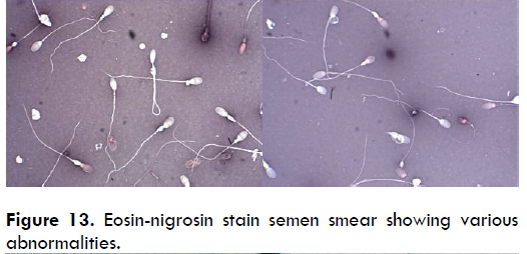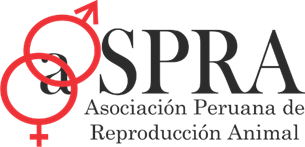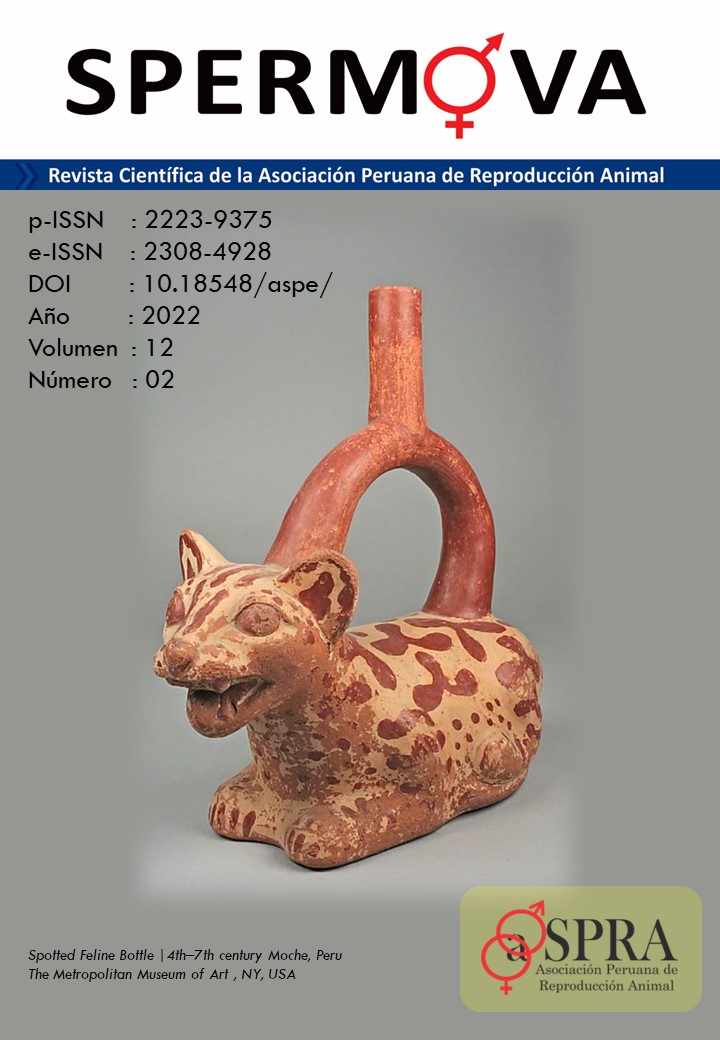The manuscripts should be organized as follows.
- Title (include; Authors, Affiliations
- Abstract (Spanish e English)
- Introduction
- Materials and methods
- Results
- Discussion
- Conclusion
- Acknowledgments
- Author Contributions
- References
Other elements
- Figures are inserted immediately after the first paragraph that are cited. The figures must represent relevant information of the study and must be of high quality (200 to 300 dpi). Do not include titles as part of the figure file
Example:

- Tables are inserted immediately after the first paragraph that are cited. Please send tables as editable text and not as images. Tables can be placed next to the relevant text in the article. Be sparing in the use of tables and make sure that the data presented in them do not duplicate results described elsewhere in the article. Please avoid the use of vertical lines.
Example:

Style and Format
File format: Manuscript files can be in the following formats: DOC, DOCX or RTF. The documents should not be locked or protected.
Length
The length of the manuscripts depends on the type of article. There are no restrictions on word count, number of figures, or amount of supporting information to clarify the conclusion of agreement to work goals. We encourage you to present and discuss your findings concisely.
Font
Use any standard font and a standard font size. We are recomending Arial, Courier, Times New Roman, or use fonts that look similar
Headings
Limit manuscript sections and sub-sections to 3 heading levels.
Layout
Manuscript text should be double-spaced. Do not format text in multiple columns.
Page and line numbers: Include page numbers and line numbers in the manuscript file.
Footnotes
Footnotes are not permitted. If your manuscript contains footnotes, move the information into the main text or the reference list, depending on the content.
Language
Manuscripts must be submitted in Spanish or English.
Abbreviations
Define abbreviations upon first appearance in the text. Do not use non-standard abbreviations unless they appear at least three times in the text. List all non-standard abbreviations (with definitions) in alphabetical order in a separate section at the beginning of the manuscript. Keep abbreviations to a minimum.
Nomenclature
Use correct and established nomenclature wherever possible.
- Units of measurement. Use SI units (International System of Units). If you do not use these exclusively, provide the SI value in parentheses after each value.
- Drugs. Provide the Recommended International Non-Proprietary Name.
- Species names. Write in italics (e.g., Ovis aries). Write out in full the genus and species, both in the title of the manuscript and at the first mention of an organism in a paper. After first mention, the first letter of the genus name followed by the full species name may be used (e.g., O. aries).
- Genes, mutations, genotypes, and alleles. Write in italics. Use the recommended name by consulting the appropriate genetic nomenclature database. It is sometimes advisable to indicate the synonyms for the gene the first time it appears in the text.
Parts of manuscrip
a) Title
Specific, descriptive, concise, and comprehensible to readers outside the field. Avoid abbreviations and formulae where possible. Maximum length of 250 characters
Author names and affiliations. Please clearly indicate the given name and family name of each author. Present the authors' affiliation addresses below the names. Indicate all affiliations with a lowercase superscript letter immediately after the author's name and in front of the appropriate address. Provide the e-mail address of each author.
Corresponding author. Clearly indicate who will handle correspondence at all stages of refereeing and publication. Ensure that the e-mail address and contact details are updated.
b) Abstract
A concise and factual abstract is required. The abstract is conceptually divided into the following sections: background, objectives, methodology, results from the study (main findings) and conclusions. The abstract should be written in a single paragraph without subtitles. Do not include references. The abstract is limited to a single paragraph of 300 words (2000 characters plus spaces)
Keywords
At the end of the paragraph the abstract, provide a maximum of 6 keywords, avoiding general and plural terms and multiple concepts. Be sparing with abbreviations.
c) Introduction
In this section the author should put the focus of the manuscript in a broader context. As you compose the Introduction, think of readers who are not experts in this field. Include a brief review of the key literature.
If there are disputes or disagreements on the issue relevant, they must be mentioned so that a non-expert reader can delve into more information. The introduction should conclude with a brief statement of the objective of the work.
d) Materials and methods
This section should provide enough detail for reproduction of the findings. Protocols for new methods should be included, but well-established protocols may simply be referenced.
e) Results
The Results section should provide details of all of the experiments that are required to support the conclusions of the paper, including information on the number of replicates (if relevant to ensure replicability). There is no specific word limit for this section, but details of experiments that are peripheral to from the focus of the article should not be included. The section may be divided into subsections, each with a concise subheading and should be written in past tense.
f) Discussion
The Discussion should spell out the major conclusions and interpretations of the work including some explanation on the significance of these conclusions. If warranted, the Results and Discussion may be combined into one section.
g) Conclusions
The main conclusions of the study may be presented in a short Conclusions section
h) Acknowledgments
Those who contributed to the work but do not meet our authorship criteria should be listed in the Acknowledgments with a description of the contribution (e.g., providing language help, writing assistance or proof reading the article, etc.), sources of financial support, and donations of products and materials.
i) Author contributions
Provide at minimum one contribution for each author in the submission article.
- The conception and design of the study, or acquisition of data, or analysis and interpretation of data,
- Funding acquisition y project administration
- Drafting the article or revising it critically for important content,
- Final approval of the version to be submitted.
Contributions will be published with the final article, and they should accurately reflect contributions to the study. The submitting author is responsible for completing this information at submission, and we expect that all authors will have reviewed, discussed, and agreed to their individual contributions.
j) References
Please ensure that every reference cited in the text is also present in the reference list (and vice versa).
- Acceptable sources include:
- Published or accepted manuscripts
- Manuscripts on pre-print servers, if the manuscript is submitted to a journal and also publicly available as a pre-print
- Thesis work published
- Specialized books
We are recommending not cite the following sources in the reference list:
- Unpublished work, including manuscripts that have been submitted but not yet accepted
- Personal communications
Formatting references
SPERMOVA uses the reference style outlined by the International Committee of Medical Journal Editors (ICMJE), also referred to as the “Vancouver” style. Example formats are listed below. Additional examples are in the ICMJE sample references. Journal name abbreviations should be those found in the National Center for Biotechnology Information (NCBI) databases.
- Published articles
Guimarães AL, Pereira SA, Leme LO, Dode MA. Evaluation of the simulated physiological oocyte maturation system for improving bovine in vitro embryo production. Theriogenology. 2015; 83(1):52-7.
Pérez-Clariget R, Bielli A. Efectos de la nutrición intrauterina sobre la programación fetal de órganos reproductivos y el comportamiento reproductivo futuro en ovinos. SPERMOVA. 2015; 5(2): 206-212. doi: 10.18548/aspe/0002.40.
- Web sites or online articles
De Vries A. The Economics of Sexed Semen in Dairy Heifers and Cows. This document is AN214, one of a series of the Animal Sciences Department, UF/IFAS Extension. Original publication date March 2009. Reviewed January 2016. Visit the EDIS website at http://edis.ifas.ufl.edu.
- Books
Hayes T. Riding Home: The Power of Horses to Heal. 1st ed. St. Martin Press; 2015: 292pp.
- Book chapters
Tucker MJ, Liebermann J. Vitrification in Assisted Reproduction, Second Edition by CRC Press Taylor & Francis Group; 2015: 247pp
- Published media (print or online newspapers and magazine articles
Stevenson J. What’s the best timed A.I. program?. Hoard's Dairyman Available: http://www.hoards.com/E_reproduction/REP21. Accessed 16 January 2016.
- Masters' theses or doctoral dissertations
Absalon-Medina V. Assisted reproduction technologies to improve dairy cattle reproduction. Doctor of Philosophy Thesis, Cornell University 2014. Available:
https://ecommons.cornell.edu/handle/1813/36035



